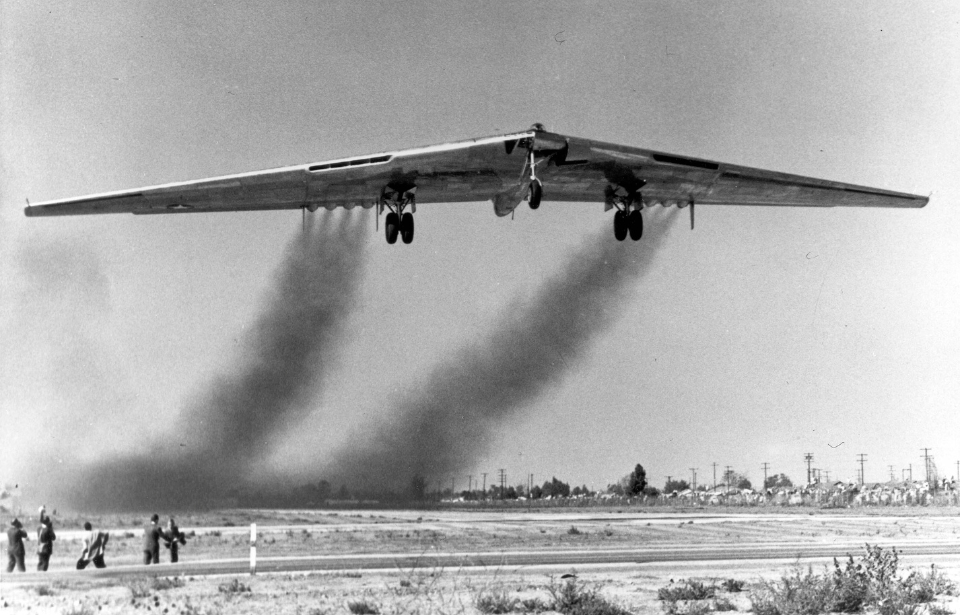The Northrop YB-49 was an American prototype jet-powered strategic bomber. The Northrop Corporation developed it following the Second World War for service with the US Air Force. The YB-49’s overall design was that of a large flying wing. While it never entered production, nor service, it was a stepping stone for the Northrop Grumman B-2 Spirit, which entered service in the 1990s.
Northrop XB-35/YB-35
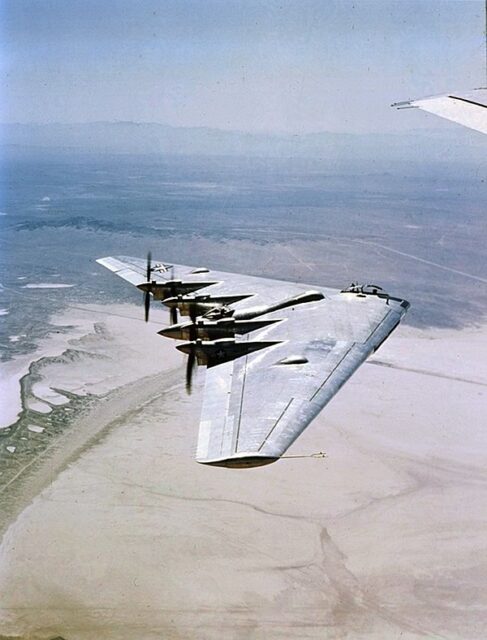
Jack Northrop began work on what would become the innovative flying wing design in the 1930s. In December 1941, his company, along with Consolidated Vultee, were contracted to produce a bomber that could carry up to 10,000 pounds of ordnance on a round trip of 10,000 miles. The maximum speed was to be 450 MPH, with a cruise speed of 275 MPH.
The intention behind the bomber’s development was to launch an attack on German-occupied Europe if Britain fell, meaning it needed the ability to fly across the Atlantic Ocean. By 1944, however, the XB-35 program was behind schedule, and it was clear the era of piston-engine bomber aircraft would soon be over.
Given this, the US Army Air Forces (USAAF) canceled the contract for propeller-driven flying wing in May 1944. Still intrigued by the concept, however, the service ordered the development of a jet-powered flying wing in June 1945. The XB-35 made its first flight the following year, with its later variant, the YB-35, only seeing two prototypes developed before the concept was scrapped.
Northrop YB-49
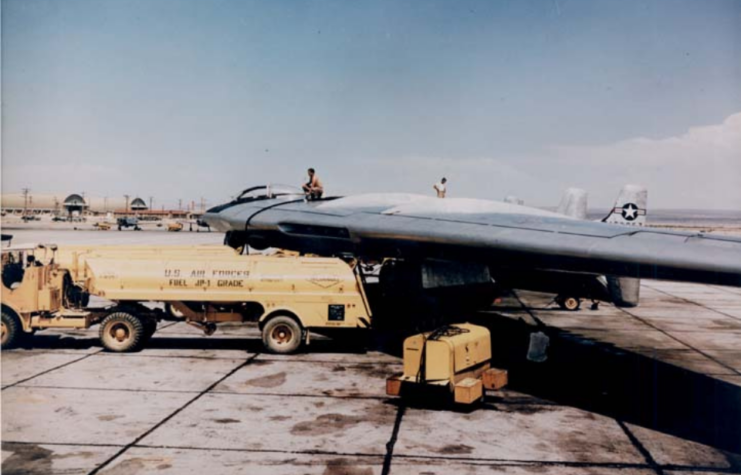
The overall design of the Northrop YB-49 was that it was a jet-powered flying wing, with everything from the engines and fuel tanks to the aircrew compartments being housed within.
The YB-49 was triangular in shape, with a length of just over 53 feet and a wingspan of 172 feet. It weighed 213,500 pounds, and was operated by a crew of six: a pilot, a copilot, a flight engineer, a radio operator, a bombardier and a gunner. The heavy bomber also had provisions for a relief crew and another two gunners planned for production models.
The greatest difference between the earlier YB-35 and YB-49 was the replacement of the former’s four Pratt & Whitney R-4360 radial engines with eight Allison J-35-A-5 axial flow turbojet engines. Each produced 4,000 pounds of thrust and allowed for an approximate cruising speed of 420 MPH and a top speed of 495 MPH. The YB-49 could operate at 42,000 feet, with a range of 4,000 miles.
The YB-49 could carry up to 16,000 pounds of ordnance. If the bomber went into production, it would also be armed with four 12.7 mm machine guns, located in a rotating “stinger” tail cone. Other modifications made to the YB-49 included the addition of four vertical stabilizers and four air dams, minimizing airflow down the wing and reducing lift.
Putting the Northrop YB-49 to the test
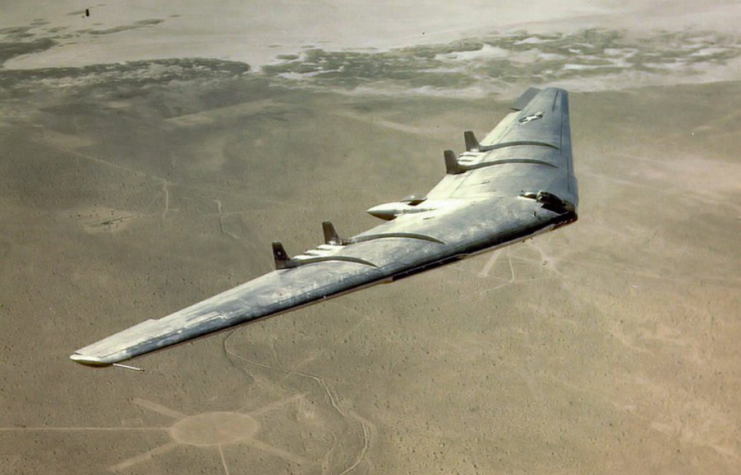
Northrop’s new bombers were designated YB-49s, with the first taking to the skies in October 1947. Initial flight tests proved successful; for instance, the YB-49 set the unofficial record for endurance when it flew at 40,000 feet continuously for six and a half hours. That being said, issues were found, such as the aircraft’s instability during bombing runs. It was found to “hunt” in yaw, ultimately lessening its accuracy.
Pilots who flew the YB-49, such as Brig. Gen. Robert Cardenas, praised the aircraft’s performance, although he did note it required a very long bomb run and would rotate backwards in stall. Fly-by-wire systems developed in the 1950s solved this problem and led to computerized systems being designed from the 1970s-onwards.
Issues with the Northrop YB-49
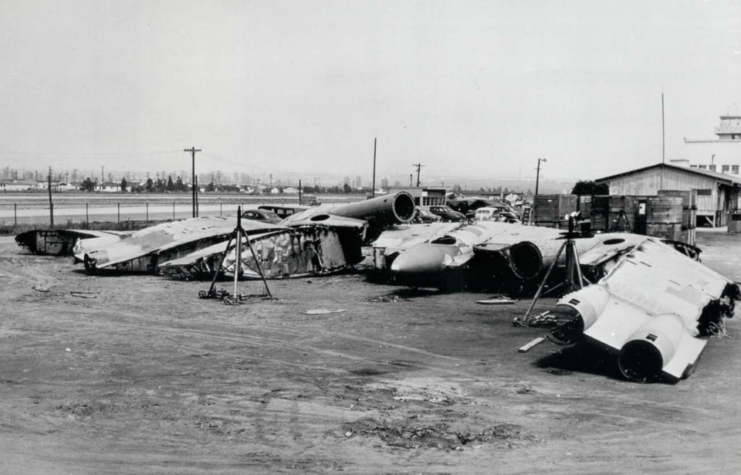
One of the first issues with the Northrop YB-49 became evident in February 1949. During a flight from Muroc Air Force Base, California to Andrews Air Force Base, Maryland and back, four of the eight engines failed and had to be shut down. The cause was later determined to be oil starvation. A YB-49 also crashed on June 5, 1948, resulting in the deaths of all five crewmen onboard. The incident was caused when the wing sections became detached from the central fuselage, making any recovery impossible.
In 1949, the YB-35 program was canceled, and while the YB-49 continued to be developed, it wasn’t destined for service. During a high-speed taxi run on March 15, 1950, one of the bombers suffered a collapse of its nosewheel, resulting in a total loss due to fire. The program was canceled following the destruction of yet another YB-49 that same month.
Lending itself to the Northrop Grumman B-2 Spirit
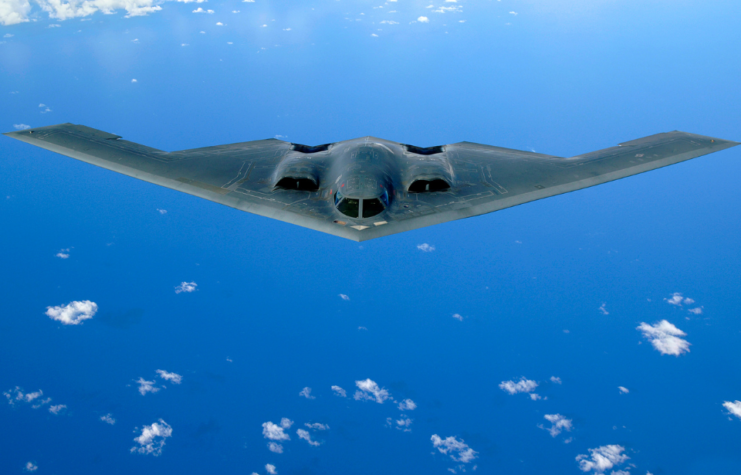
The idea of the flying wing remained dormant for years, until Northrop Grumman began the development of the B-2 Spirit. It was found the YB-49 had a small radar cross-section, which ultimately made the design promising and ahead of its time.
Jack Northrop died in 1981. Shortly before his death, he was able to see the early development of his flying wing design, in the form of the B-2. The stealth bomber first flew in 1989, and entered service with the US Air Force in January 1997. A total of 21 have been produced, and they are a continued testament to the original design of the YB-49.
More from us: US Navy Pilots Were Afraid to Fly the Vought F7U Cutlass
The legacy of the YB-49 continues, as Northrop Grumman has begun work on yet another new stealth bomber, the B-21 Raider.
